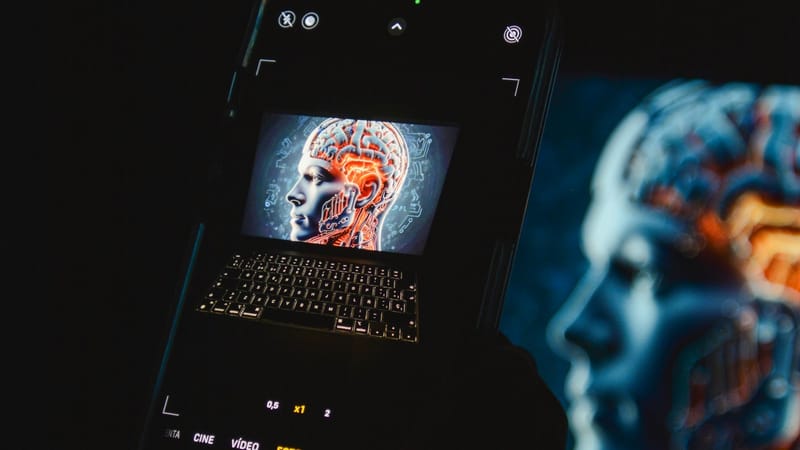The 2025 State of AI Decoded: Chips, Agents, and a Whole Lot of Power Cables
Your cut-out-and-keep guide to what's happening in the exponentially expanding universe of artificial intelligence
You know that moment when a friend shows up with a 300-slide deck and says, “it’s just the highlights”? Probably not. Because nobody turns up to dinner armed with a laptop and a slide-deck. Unless, of course, that person is Nathan Benaich unveiling this year’s State of AI Report.
Tortured intro over, the first thing to say is Benaich's research (as alluded to) is dense. But it is also surprisingly optimistic about where we are and where we are going.
What This Report Actually Is
The report is a community fact pack on AI’s last 12 months. It covers research, industry, policy and safety, plus usage trends. It is open access, widely cited, and reviewed by folks across big tech, academia, start-ups, and policy. If you work anywhere near AI, bookmark stateof.ai and their writing at Air Street Capital.
Research: The Frontier Narrows, The Base Broadens
OpenAI still sets the pace on top-end general intelligence according to common leader boards and evaluations, but the gap is not a canyon anymore. The open source wave kept rolling, with China’s community stepping hard on the gas. Alibaba’s Qwen family is getting huge traction because the models are accessible and right-sized for real builders, which is what open source actually needs to win adoption.
RL Grows Up
Reinforcement learning is shifting from fuzzy vibes to verifiable rewards. That matters because it turns long, multi-step tasks into measurable progress. You can see the payoff in math agents hitting International Math Olympiad gold-level performance. Two years ago this would have felt like science fiction. Now it is a slide, a repo, and a weekend.
From Chain of Thought to Chain of Action
Robotics is absorbing language model reasoning patterns. Instead of a robot guessing its way around a kitchen, you get an agent that writes out steps, checks them, then executes. Think “explain your plan, then go do it.” That bridge from text to touch is one of the year’s most important shifts.
Biology Keeps Scaling
The same scaling laws that gave us better chat models also show up in protein sequence tasks. Once you notice that, it is hard to unsee it. Language, proteins, code, markets, many of these systems reward more data and smarter training. Expect more crossover work where bio teams use the best of NLP and vice versa.
Industry: Superintelligence Talk, Cheaper Capability, Real Revenue
Executives moved past the AGI label and now talk superintelligence. Whatever name you pick, the practical story is clearer. Capabilities are rising while unit costs fall, which flips the old “this will never be profitable” argument. Adoption data looks strong. AI products are sticky, cohorts improve over time, and contract sizes are growing. AI-first start-ups, the ones that ship novel agentic features and new consumer experiences, are outgrowing peers.
The DeepSeek Scare and The Jevons Loop
A single reasoning paper triggered a market wobble earlier this year, then investors remembered basic economics. Cheaper intelligence creates more demand, which needs more chips, which feeds more usage. You can call it the Jevons paradox. You can also call it your next GPU waitlist.
Nvidia Is The Gravity Well
H100 and H200 clusters are where a lot of actual training happens. Competing silicon exists and will matter, but if you had put competitor budgets into Nvidia you would have done very well, and the market knows it. Nvidia is now a capital allocator too, backing labs and a ring of “neoclouds” that sell deep learning capacity like it is bottled water.
Geopolitics: Sovereign AI, Energy Bottlenecks, Export Whiplash
Countries are building national AI stacks. Money is flowing into domestic models, domestic data centres, and domestic supply chains. Energy is the new choke point. The United States is trying to speed up permits and power buildout for data centres. China has been adding capacity faster, with looser rules and higher operating margins.
Policy is messy. The US has zigzagged on export controls. Europe’s AI Act is moving from text to enforcement, with a softer tone than the early drafts. China, facing debt headwinds, is still doubling down on AI spending and open source model releases. The net result is a multipolar race to compute, talent, and power.
Safety: More Incidents, Not Enough Funding, Better Tools
There is a vibe shift. Safety labs and government initiatives lost some steam, deadlines slipped, and priorities tilted toward shipping. External safety testing spend, relative to overall AI budgets, is still small. At the same time, incident reports and misuse examples are rising. Cyber capabilities are improving at a rapid clip, so a small gap today can turn into a big gap next year.
On the bright side, interpretability is getting more surgical. Teams are tracing activations and features at finer granularity, and hallucination work has moved from loose labels to token-level detection. Alignment research is also surfacing hard problems in the open, like models that fake alignment under evaluation or pick up unwanted personas through fine-tuning. None of this is solved, but the community is converging on sharper methods.
Builders: What People Actually Use and Pay For
A practitioner survey counted about 1,200 responses. The headline is simple. Most respondents use AI at work and at home. Many pay out of pocket, including a meaningful chunk spending more than two hundred dollars a month. Inside companies, budgets for generative AI grew this year. The roadblocks are the ones you would expect. Time to configure systems. Data privacy answers. Expertise and integration gaps. The use cases are bread and butter. Coding, documentation, content generation, the stuff that shows up in everyone’s sprint board.
On the product leader board, ChatGPT sits on top with strong usage alongside Claude, Gemini and Perplexity, with DeepSeek and Grok in the next cluster. Surprise of the year for many respondents was how far code generation and long-range task execution have come. The second surprise was the quality and speed of video and audio generation tools.
Predictions to Circle Now
Open-ended agents will contribute a real scientific discovery. A Chinese lab will top a major public leader board. The US could try to pre-empt state AI rules with a sweeping federal move. I do not bet house money on predictions, but the trend lines make these reasonable tests for 2025.
Why This All Matters
It is easy to get lost in model cards and benchmark screenshots. The real story is that intelligence is becoming a cheaper input to work. When that happens, people reorganize. Teams rethink workflows. Countries rebuild infrastructure. Entire categories open up for agents that span text, code, biology and the physical world. The winners will not be the ones who read the most slides. They will be the ones who connect the slides to systems, ship, and keep attention on safety where it counts.
If you want to go deeper
- Read the full report at stateof.ai.
- Follow the analysis stream at Air Street Capital.
- For an ongoing pulse, subscribe to the Guide to AI newsletter.
Cross-heads to keep handy
- Frontier performance, open source acceleration, and RL with verifiable rewards
- Robotics adopts chain of action reasoning
- Costs fall while adoption and revenue climb
- Nvidia as critical infrastructure and investor
- Sovereign AI and the power bottleneck
- Safety methods mature while incidents rise
- Practitioners pay, ship, and want better integrations
If you are building, keep your backlog boring and your ambition loud. Start with one measurable workflow, wire in an agent that can plan, verify, and act, and track the value. If you are a policy person, get specific on power and supply chain timelines. If you are a researcher, keep pushing interpretability and grounded evaluation. The rest of us will thank you later.







